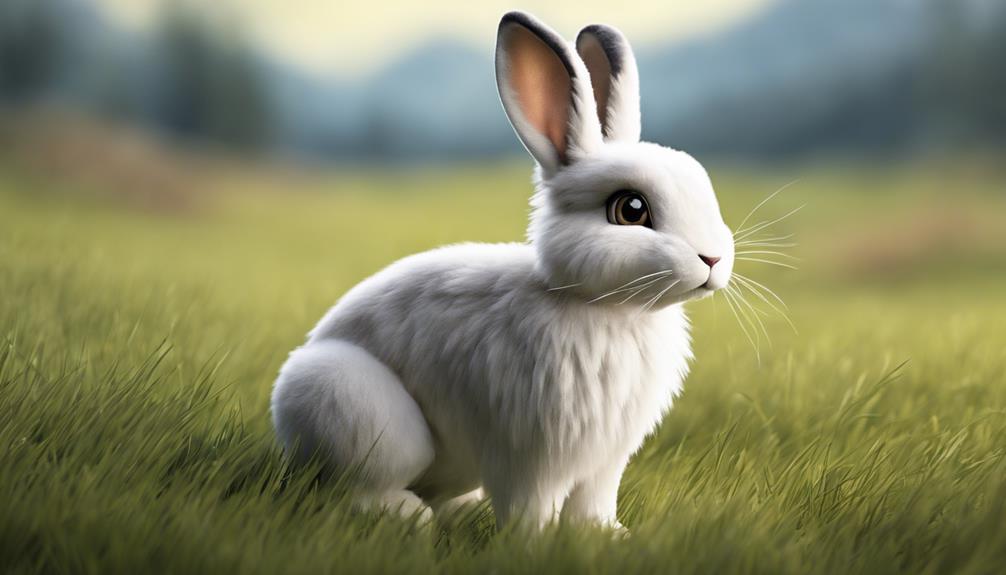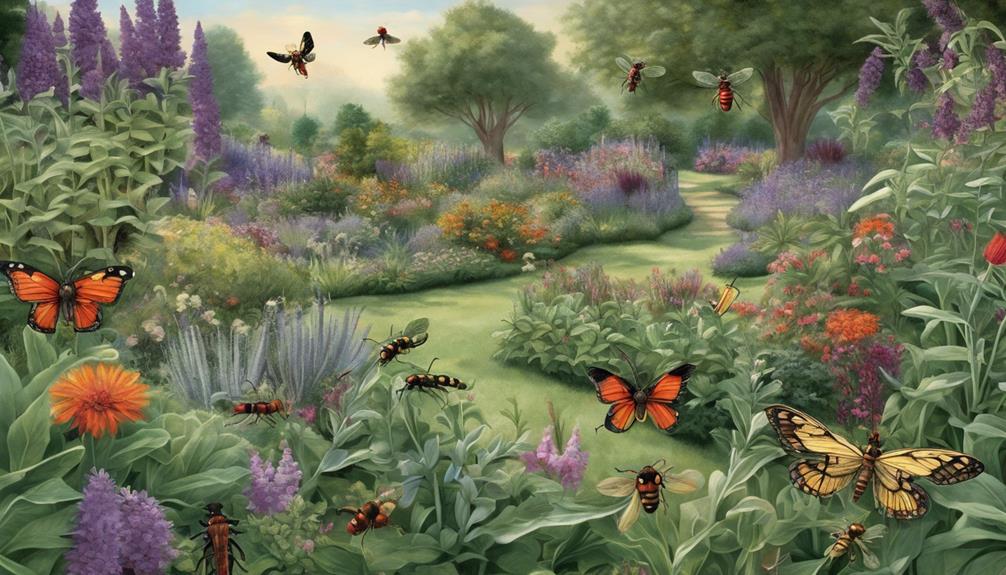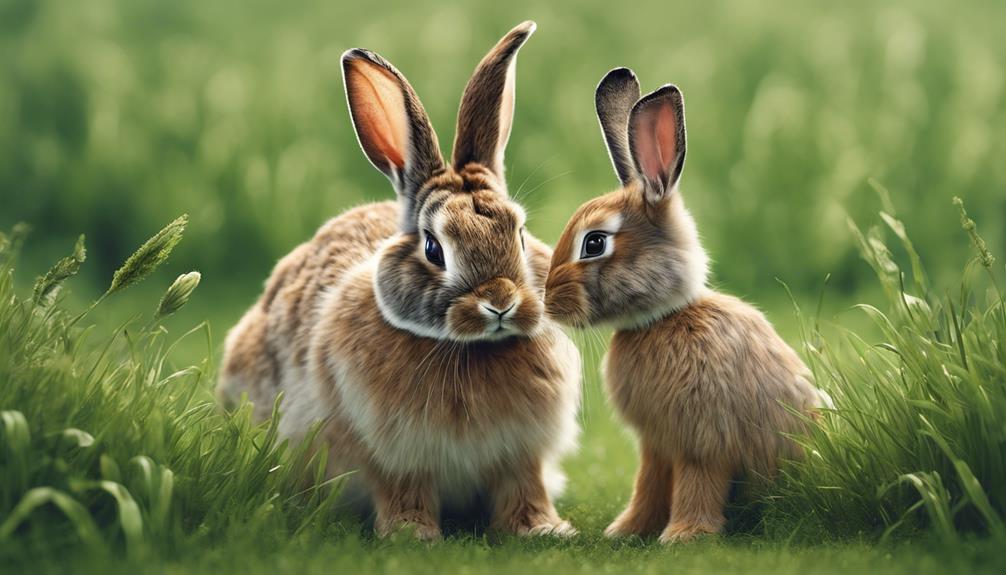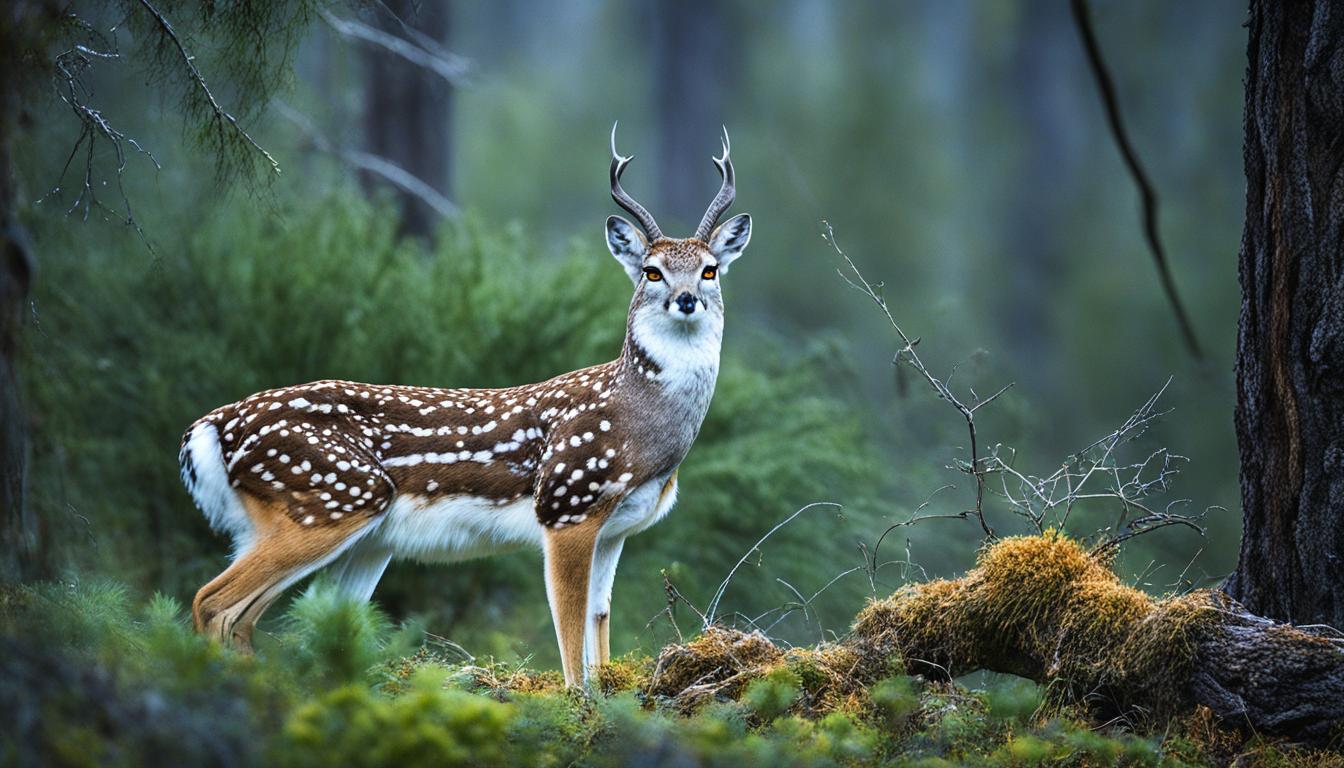I will share information about 7 animals that share similarities with rabbits. First, the Pika, also known as the rock rabbit, inhabits cold regions in Asia and North America, remaining active throughout the year. Following that, the Cottontail, distinguished by its cotton-like tail, is often confused with hares but is actually a rabbit that produces multiple litters annually. Hares are recognized for their speed, reaching up to 45 mph, and agility, as they change coat colors with the changing seasons. The Viscacha, a fluffy rodent from South America, communicates through vocalizations and displays intricate behaviors. American Pikas excel in mountainous areas, scurrying about in search of shelter. The Varying Hare adjusts its coat color for camouflage, enabling it to survive in various environments. Lastly, the Brush Rabbit, native to the western United States, prefers dense habitats and effortlessly blends in with its surroundings. Discover more about these captivating creatures!
Key Takeaways
- Pikas and American pikas resemble rabbits, sharing small mammal characteristics and cold climate habitats.
- Cottontails, with their cotton-like tails, are often mistaken for rabbits due to their similar appearance.
- Hares, known for their speed and agility, are often mistaken for rabbits but have distinct features like larger hind feet.
- Viscachas, large fluffy rodents, share some similarities with rabbits in terms of social behavior and habitat preferences.
- Brush rabbits, native to the western U.S., exhibit similar behaviors to rabbits such as being herbivores and blending into their surroundings.
Pika – The Rock Rabbit
As a small mammal native to cold climates in Asia and North America, the pika, also known as the rock rabbit, inhabits rocky mountainsides with crevices for shelter. These mammals, resembling rabbits, have adapted to survive in harsh environments through their unique behaviors and physical characteristics. Rock rabbits are herbivores that rely on dried plants stored in their dens during winter when food is scarce. Unlike many other mammals, pikas don't hibernate and remain active throughout the year, continuously foraging for sustenance.
One of the most fascinating aspects of rock rabbits is their distinctive vocalizations. These sounds serve various purposes such as individual recognition, warning others about predators, and attracting potential mates. By understanding these vocal cues, pikas can communicate effectively within their social groups and guarantee their survival in the wild.
Additionally, the evolutionary history of pikas dates back to the late Eocene to early Oligocene period in Asia, showcasing their long-standing presence on Earth and the remarkable adaptations that have allowed them to thrive in challenging environments.
Cottontail – The Classic Bunny
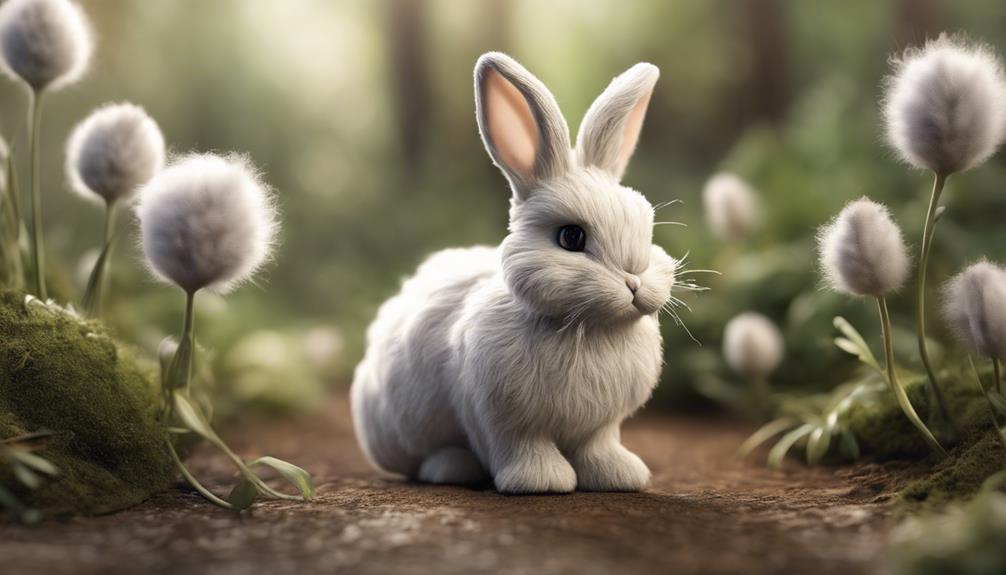
Cottontails, like the classic bunny, are rabbit look-alike species that share unique bunny resemblances. These diverse rabbit-like creatures exhibit a range of characteristics that make them intriguing to observe in the wild.
From their cotton-like tails to their herbivorous diet, cottontails showcase the essence of classic bunnies in various ecosystems.
Rabbit Look-Alike Species
With their distinctive cotton-like tails, cottontail rabbits stand out among rabbit species, making them easily recognizable in their natural habitats.
- Cottontails are often confused with hares due to their similar appearance, but they belong to the same family as other rabbits.
- Their brown fur provides excellent camouflage in the wild, blending seamlessly with the surroundings.
- These herbivores have a varied diet, including grasses, clover, and other plant materials found in their habitats.
- Known for their prolific breeding habits, female cottontails can produce multiple litters of young each year.
Cottontail rabbits are widespread across North and South America, adapting to diverse environments from forests to grasslands.
Unique Bunny Resemblances
Bounding through the meadows with their fluffy white tails bobbing behind them, cottontail rabbits exude the quintessential charm of a classic bunny. These small mammals sport rounded ears and are known for their swift movements, thanks to their large hind legs designed for quick hops.
Cottontails can be found in diverse habitats like forests, grasslands, and deserts, showcasing their adaptability. Primarily herbivores, they munch on grass, plants, and fruits, sustaining their energy for their agile lifestyle. Their fur colors often blend seamlessly with their surroundings, providing excellent camouflage.
Observing these adorable creatures in action offers a glimpse into the enchanting world of nature's remarkable adaptations.
Diverse Rabbit-Like Creatures
Diverse rabbit-like creatures resembling the classic bunny exhibit a range of unique traits and adaptations in various ecosystems. These animals belong to a group of mammals known as the order Lagomorpha, which includes rabbits, hares, and pikas. When it comes to these rabbit-like creatures, each species has its own set of characteristics that help them thrive in their habitats.
Here are some intriguing facts about these diverse creatures:
- Different species within the order Lagomorpha have varying coat colors and patterns to blend in with their surroundings.
- Many rabbit-like creatures have large ears that aid in detecting predators and regulating body temperature.
- These animals have powerful hind legs designed for swift running and jumping to escape danger.
- Some species exhibit unique behaviors such as thumping their hind feet to communicate with others or mark territory.
Hare – The Swift Runner

Hares are known for their incredible speed and agility, capable of reaching impressive speeds of up to 45 mph.
Their large hind feet aid in their swift movements, especially over snow-covered terrain.
Unique characteristics such as the snowshoe hare's seasonal coat color changes set them apart from other members of the Leporidae family.
Hares Speed and Agility
I swiftly navigate my surroundings with speeds up to 45 miles per hour, thanks to my powerful hind legs and keen senses. Here are some key aspects of my speed and agility:
- Leaping Ability: My powerful hind legs enable me to leap up to 10 feet in a single bound, helping me escape predators swiftly.
- Sensory Skills: With exceptional hearing and vision, I can detect danger and react quickly, aiding in my fast movements to evade threats.
- Agile Maneuvers: I exhibit remarkable agility by zigzagging and changing direction rapidly while running, making it challenging for predators to catch me.
- Quick Reflexes: I can make quick turns and sudden stops to outmaneuver predators in my natural habitat, showcasing my swift and strategic movements.
My speed and agility are essential for survival in the wild, allowing me to outpace and outwit potential threats.
Hares Unique Characteristics
Swiftly darting across snowy landscapes, hares showcase their unique characteristics as agile and adaptable creatures. With their long hind legs, hares can swiftly navigate through snow-covered terrains, evading predators with ease. Despite their short legs, these swift runners can reach impressive speeds when needed.
Hares possess upper incisors that continuously grow, allowing them to efficiently graze on grasses, plants, buds, twigs, and bark to sustain their dietary requirements. Their ability to change coat color seasonally, like the Snowshoe Hare, aids in camouflage, providing them with a survival advantage in their environments.
As part of the Leporidae family, hares, such as the Arctic Hare, have evolved unique survival strategies that make them resilient and resourceful in harsh conditions.
Viscacha – The Fluffy Lookalike

Resembling rabbits in appearance and behavior, Viscachas, large fluffy rodents from the Chinchillidae family, are known for their agility and speed in the rocky Andes mountains of South America. Here are some fascinating facts about these fluffy lookalikes:
- Habitat Adaptations: Viscachas have evolved to thrive in the harsh rocky environments of the Andes, where their long, bushy tails and hind legs aid in their hopping locomotion, much like North American rabbits and hares.
- Insulation Properties: Their soft and dense fur not only gives them a fluffy appearance but also provides excellent insulation against the cold temperatures of the high-altitude regions they inhabit.
- Social Communication: Viscachas are social creatures that communicate through vocalizations, displaying complex social behaviors within their burrow systems.
- Agility and Speed: These rodents aren't only agile climbers among the rocky terrain but also exhibit remarkable speed in their movements, making them a sight to behold in their natural habitat.
American Pika – The Mountain Dweller
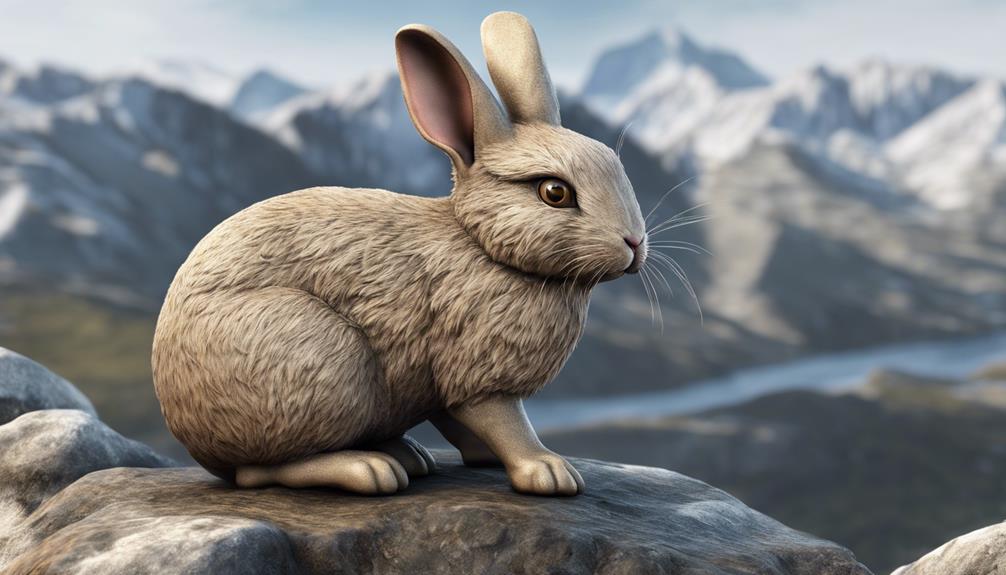
Viscachas, with their agility and speed in the rocky Andes, share similarities with American pikas, small mammals native to cold climates in Asia and North America. American pikas are fascinating creatures that thrive in mountainous regions, including some National Parks. These adorable animals are well-adapted to their environment, often found scurrying around rocky mountainsides where they seek shelter in crevices or burrows. Unlike many mammals, pikas don't hibernate, remaining active even during snowy winters.
One interesting fact about American pikas is their unique way of communicating. They use distinct vocalizations for various purposes like recognizing individuals, warning others about predators, and attracting mates. The evolutionary roots of these cute critters trace back to the late Eocene to early Oligocene period in Asia, showcasing their long history on Earth.
Interestingly, American pikas are sometimes mistaken for Snowshoe hares due to their similar appearance, but these two species have distinct characteristics that set them apart. This distinction adds to the biodiversity and wonder of the animal kingdom.
Varying Hare – The Color-Changer

The Varying Hare, known for its remarkable coat color change, adapts to its environment through a unique camouflage technique. This ability to change the color of its fur is a fascinating evolutionary trait that has helped these hares survive for millions of years in a wide variety of habitats.
- Adaptive Camouflage: The Varying Hare's coat color change isn't just for aesthetics but serves an important purpose in blending seamlessly with its surroundings, providing it with a clever advantage against predators.
- Environmental Response: The Varying Hare's color-changing ability is triggered by environmental cues, such as changes in daylight length, enabling it to adjust its appearance according to the season.
- Survival Strategy: This remarkable adaptation allows the Varying Hare to effectively evade predators and remain hidden from sight, showcasing the brilliance of nature's design.
- Versatile Habitat: With its color-changing ability, the Varying Hare can thrive in a wide variety of environments, showcasing the adaptability and resilience of this species.
Brush Rabbit – The Shy Neighbor

Brush rabbits, native to the western United States, are small cottontail rabbits known for their elusive and shy nature. These rabbits, also called California brush rabbits, sport soft, gray-brown fur with a white underside and striking black markings on their face and ears. Preferring dense, brushy habitats like chaparral and woodlands, they feed on grasses, clover, and leaves as herbivores.
Unlike pikas that don't hibernate, brush rabbits are active year-round. There are two species of brush rabbits, each with its unique characteristics and behaviors. One fascinating trait of brush rabbits is their knack for avoiding human contact, often remaining concealed in thick vegetation.
Their shy demeanor and preference for seclusion make them intriguing neighbors in the wild. Observing these elusive creatures in their natural habitat requires patience and a keen eye, as they're masters at blending in with their surroundings. Brush rabbits embody the essence of wildlife resilience and adaptability, adding a touch of mystery to the ecosystem they inhabit.
Frequently Asked Questions
What Other Animal Looks Like a Rabbit?
I can share unique insights about animals that resemble rabbits. From the pika's cute appearance to the Arctic hare's long legs, nature surprises with diverse creatures that mimic rabbit traits in fascinating ways.
What Animal Is the Closest Relative to a Rabbit?
Hares, not pikas, are the closest relatives to rabbits within the Leporidae family. Shared characteristics and genetic similarities link rabbits and hares closely. Their common ancestor led to a significant evolutionary relationship, highlighting their genetic connection.
What Resembles a Rabbit?
While many animals share physical traits with rabbits, their behaviors and habitats often distinguish them. Observing these nuances reveals a rich tapestry of biodiversity. Exploring such similarities can uncover hidden connections in nature.
Which Organism Is Most Closely Related to a Rabbit?
The organism most closely related to a rabbit is the pika. Pikas share an evolutionary history with rabbits and belong to the same family, Leporidae. Despite some differences, pikas and rabbits are considered close relatives in the lagomorph family.
What Are Some Animals That Resemble Rabbits?
Some similar small mammals to rabbits include pikas, hares, and pika-like animals. These animals share physical and behavioral traits with rabbits, such as their small size, herbivorous diet, and prolific breeding habits. They are often mistaken for rabbits due to their resemblance in appearance and lifestyle.
Conclusion
To wrap up, these animals resembling rabbits may look similar at first glance, but each one has unique characteristics that set them apart. From the swift runner hare to the shy brush rabbit, there's a wide variety of creatures that share similarities with the classic bunny.
By learning about these different animals, we can appreciate the diversity of wildlife and the beauty of nature. It's important to observe and respect these animals in their natural habitats to guarantee their survival.
